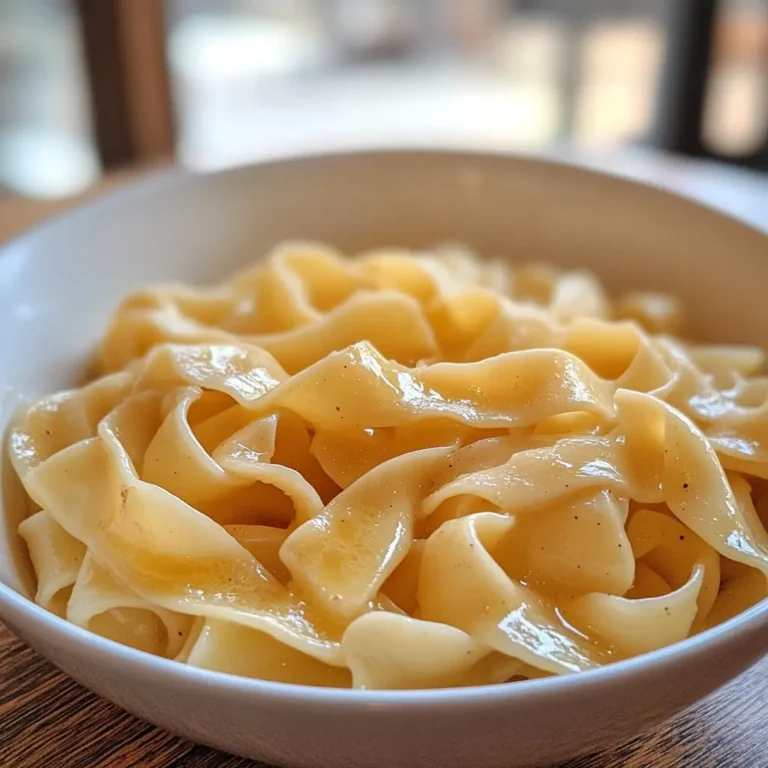If you’ve been craving a warm, buttery plate of noodles just like the ones served in school lunchrooms or small-town diners, then this cafeteria noodles recipe is exactly what you need. Simple, creamy, and comforting, these noodles are a nostalgic favorite that takes minimal effort but delivers maximum flavor. Whether you remember them from childhood lunches or are just discovering their delicious simplicity, this guide will show you how to recreate that soft, savory experience at home.
In this comprehensive guide, we’ll explore everything you need to know about cafeteria-style noodles—from what makes them different, the essential ingredients, and how to prepare them step by step, to how you can level up the dish with custom variations. You’ll also learn how to make noodles from scratch, find out what pairs best with them, and even discover healthier alternatives without losing that cozy vibe.
Follow us on Facebook for fresh new recipes, cooking tips, and food inspiration every week!
Table of contents
- What Are Cafeteria Noodles?
- Ingredients Used in Cafeteria Noodles Recipe
- How to Make Cafeteria Noodles Step by Step
- Cafeteria Noodles vs. Other Types of Noodles
- What Goes Well With Cafeteria Noodles?
- Homemade Cafeteria Noodles Recipe from Scratch
- Variations of Cafeteria Noodles Recipe
- Storage and Reheating Tips
- Nutrition Facts and Healthier Alternatives
- Frequently Asked Questions (FAQs)
- Conclusion
What Are Cafeteria Noodles?
Origin and Meaning of Cafeteria Noodles
Cafeteria noodles are a simple, creamy noodle dish traditionally served in school cafeterias, church suppers, and community potlucks across the American South and Midwest. These noodles became famous not because they’re flashy or exotic, but because they’re so dependable, comforting, and universally liked. Made with broad egg noodles, butter, and sometimes chicken broth or bouillon for richness, this dish is the epitome of “simple food, done well.”
The name “cafeteria noodles” stems from their popularity in institutional settings where large batches of affordable and filling food are a must. These noodles hit all the marks—budget-friendly, quick to make, and satisfying for all ages. Often, they’re served with turkey, chicken, or meatloaf and paired with mashed potatoes or green beans for a complete comfort meal.
Why Are They So Popular in Schools and Institutions?
One reason cafeteria noodles became so popular is their versatility. These noodles absorb flavors easily, making them the perfect base for different types of broths, seasonings, or meats. They’re typically made in large stockpots and hold up well in steam trays—making them ideal for schools, hospitals, or buffets.
Plus, they’re a hit with picky eaters. The buttery texture and mild flavor appeal to kids and adults alike. There’s no need for complex sauces or exotic spices—just a few quality ingredients and a little love go a long way in making this comfort classic.
Ingredients Used in Cafeteria Noodles Recipe
Simple Pantry Staples That Make the Dish Special
The magic of a cafeteria noodles recipe lies in its minimalism. Unlike gourmet pasta dishes that require a dozen ingredients, this one shines with just a handful of humble staples. At the heart of the dish are wide egg noodles—their thick, chewy texture absorbs the buttery broth like a sponge. They’re the same type of noodles often found in Southern-style chicken noodle soups or Amish recipes.
Here’s what you typically need for the classic version:
| Ingredient | Purpose |
|---|---|
| Wide Egg Noodles | Provides the soft, hearty base |
| Unsalted Butter | Key for that rich, silky coating |
| Chicken Broth or Bouillon | Adds depth, salt, and umami |
| Salt & Black Pepper | Simple seasoning to balance flavors |
Some variations also use a dash of garlic powder or onion powder, but these are optional. If you prefer a richer flavor, use bone broth instead of basic chicken stock.
Don’t skimp on the butter—it’s the soul of this dish. Use real dairy butter for the best flavor. Margarine or oil just won’t give that comforting finish that cafeteria noodles are famous for.
Check out how we bring out rich creaminess in another dish using fewer ingredients:
Don’t miss our creamy mushroom pasta recipe
Optional Add-ons for Extra Flavor and Texture
While the basic cafeteria noodles are lovely on their own, you can take things a step further with a few add-ins:
- Shredded rotisserie chicken or turkey: Ideal for turning the dish into a main course.
- Frozen peas or corn: Adds color and mild sweetness.
- Parmesan cheese: For a cheesy, salty kick.
- Heavy cream: For a creamier, richer broth.
- Herbs like parsley or thyme: To add freshness and aroma.
For those watching their sodium, opt for low-salt broth and unsalted butter, then season to taste at the end.
Depending on your pantry, these noodles can go from nostalgic school food to a full-blown, elegant comfort dinner.
How to Make Cafeteria Noodles Step by Step
Making this dish at home is as comforting as the dish itself. Whether you’re cooking for a crowd or just whipping up a batch for a weeknight dinner, the process is straightforward and foolproof. The goal? Soft, buttery noodles with a cozy, savory taste—just like you remember from school lunches.
Boiling the Noodles Perfectly
It starts with the noodles—and timing is everything. Egg noodles cook faster than traditional pasta, and overcooking them can make them fall apart in your broth. Here’s how to get them just right:
Steps to boil egg noodles for cafeteria-style noodles:
- Bring water or chicken broth to a rolling boil in a large pot.
- Add 1-2 teaspoons of salt for flavor.
- Drop in wide egg noodles and stir to prevent sticking.
- Boil uncovered for 6–7 minutes, or until noodles are soft but not mushy.
- Drain if needed, though in many recipes, the broth is part of the final dish.
If you’re using bouillon cubes instead of stock, dissolve them into the boiling water before adding the noodles. The noodles will soak up all that umami-rich flavor as they cook.
Making the Signature Butter Sauce
The key feature of cafeteria noodles is the butter sauce. It’s not a cream sauce or a roux—it’s a buttery broth that coats each noodle with savory richness.
Here’s a classic butter broth recipe:
| Ingredient | Amount |
|---|---|
| Unsalted butter | ½ cup (1 stick) |
| Chicken broth | 3–4 cups |
| Salt & pepper | To taste |
Steps:
- In a large pan or the same pot, melt the butter on medium heat.
- Add the chicken broth and stir until combined.
- Season with salt, pepper, and optional seasonings like garlic powder or onion powder.
- Let it simmer for 3–5 minutes to blend flavors.
- Add the cooked noodles back into the pan and stir to coat.
The broth will reduce slightly, and the butter will cling to the noodles, giving you that smooth, velvety finish.
For an extra-rich version, a splash of cream or a spoonful of sour cream can thicken the sauce slightly and add depth.
Looking for inspiration on one-pot meals?
Check out our one pot pasta dish that’s both easy and delicious
Cafeteria Noodles vs. Other Types of Noodles
Understanding how cafeteria noodles compare to other popular noodle recipes helps appreciate what makes them so unique. While many noodle dishes are heavily seasoned or loaded with sauces, cafeteria noodles take a more minimalist, comforting approach.
Comparison with Hakka Noodles
Hakka noodles are a staple in Indo-Chinese cuisine—wok-fried, spicy, and full of vegetables and soy-based sauces. In contrast, cafeteria noodles are soft-boiled and tossed in a buttery broth, delivering a completely different taste and texture experience.
| Feature | Cafeteria Noodles | Hakka Noodles |
|---|---|---|
| Cooking Style | Boiled & simmered in butter | Stir-fried in a wok |
| Key Ingredients | Egg noodles, butter, broth | Noodles, veggies, soy sauce |
| Flavor Profile | Mild, buttery, savory | Spicy, tangy, umami |
| Common Add-ons | Chicken, turkey, peas | Bell peppers, cabbage, chili sauce |
| Sauce Base | Chicken broth and butter | Soy sauce and vinegar |
Hakka noodles are designed to be bold and dynamic, perfect for spice lovers and those craving street-food-style meals. Meanwhile, cafeteria noodles appeal to those looking for warmth, simplicity, and comfort in every bite.
Want something greener and lighter to pair with your buttery noodles?
Try our refreshing green goddess pasta salad
How They Differ from Asian Stir-Fry or Italian Pasta
Cafeteria noodles differ even more when compared with mainstream Italian pasta dishes or Asian stir-fried noodles. Most of those dishes rely heavily on tomato-based sauces, cheese, or stir-fry techniques, and often include a wide variety of vegetables and meats.
Unlike creamy Alfredo or marinara-based pastas, cafeteria noodles rely on very few ingredients—butter, broth, salt, and egg noodles. It’s a no-fuss meal with a deeply nostalgic flavor profile that doesn’t aim to impress with flair, but with familiarity.
Similarly, while Asian stir-fried noodles deliver complexity through soy, sesame oil, and ginger, cafeteria noodles take a subtle, buttery route that’s all about comfort.
Don’t miss our light and healthy twist on bread to serve alongside this meal:
Looking for inspiration? Try our no-knead gluten free bread
What Goes Well With Cafeteria Noodles?
Cafeteria noodles are comforting, creamy, and versatile. Whether you’re making them as a side or a full meal, there are plenty of delicious additions and pairings that can round out your plate. Think of them like a blank canvas that welcomes both humble ingredients and fancy upgrades.
Perfect Pairings: Protein Options Like Chicken, Ham, or Tofu
To make your cafeteria noodles a meal in themselves, pair them with protein. The mild, buttery flavor of the noodles goes well with both roasted and sautéed meats.
Here are some ideal pairings:
- Shredded rotisserie chicken: Mix it directly into the noodles for a quick protein boost.
- Baked ham: A classic Southern-style addition.
- Ground turkey or beef: Browned and seasoned simply for extra heartiness.
- Fried tofu or tempeh: For a vegetarian-friendly option that still adds texture and protein.
You can even turn your noodles into a comfort-style casserole by combining them with turkey leftovers and baking with breadcrumbs or cheese.
Want to make it more festive?
Discover great ideas like smoked turkey breast to go with your noodles
Side Dishes to Serve Alongside for a Complete Meal
Cafeteria noodles were often served with familiar school-lunch sides. When creating a nostalgic meal or feeding a family, these sides pair beautifully:
- Mashed potatoes: Because carbs-on-carbs is pure comfort.
- Steamed green beans or peas: Their color and freshness balance the buttery noodles.
- Dinner rolls or cornbread: Perfect for soaking up the sauce.
- Simple side salad: For a lighter contrast to the richness.
Looking to take the Southern route?
Check out this tender turkey neck recipe—a Southern comfort classic
If you’re planning to bring cafeteria noodles to a potluck or family dinner, these side combinations are guaranteed crowd-pleasers. Want to add a modern twist to your meal? Try topping the noodles with crispy shallots or a drizzle of garlic oil for an extra punch.
Homemade Cafeteria Noodles Recipe from Scratch
While store-bought egg noodles are convenient, there’s something incredibly satisfying about making noodles from scratch. The texture, freshness, and ability to customize them to your taste elevate even the simplest cafeteria noodles recipe to the next level.
How to Make Fresh Egg Noodles at Home
Homemade egg noodles are soft, rich, and ideal for buttery broth-based dishes. You don’t need any fancy tools—just a rolling pin, a clean surface, and some patience.
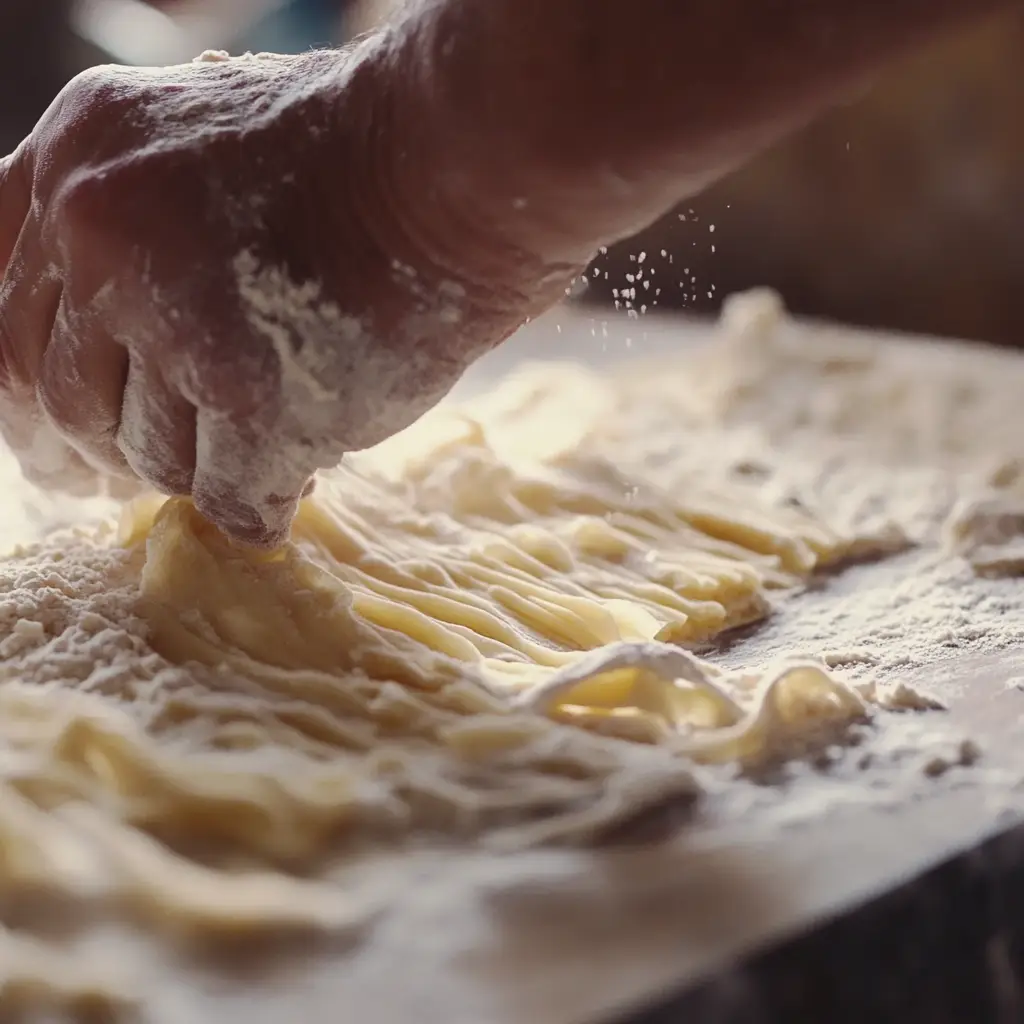
Basic Homemade Egg Noodles Recipe
| Ingredient | Amount |
|---|---|
| All-purpose flour | 2 cups |
| Eggs | 3 large |
| Salt | ½ tsp |
| Water (if needed) | 1–2 tbsp |
Steps:
- Make a mound of flour on a clean surface, then create a well in the center.
- Crack the eggs into the well and add salt.
- Gradually mix the flour into the eggs using a fork or your hands.
- Knead the dough for 8–10 minutes until smooth and elastic.
- Wrap and let rest for 30 minutes.
- Roll out the dough thin and cut into wide strips.
Cook the noodles in boiling broth or salted water for about 3–5 minutes, depending on thickness. That’s it! You’ve got fresh, chewy egg noodles perfect for this nostalgic dish.
Want a no-fuss meal idea that still feels like comfort food?
Don’t miss our Japanese Mounjaro recipe for a unique, homemade approach
Tips for Rolling, Cutting, and Storing Homemade Noodles
- Flour is your friend: Dust the surface and dough frequently to avoid sticking.
- Aim for uniform thickness: Uneven noodles cook at different rates.
- Use a pizza cutter: It makes slicing faster and cleaner.
- Dry before storing: If not using immediately, air-dry the noodles on a rack or floured surface.
- Freeze for later: Lay them flat in a ziplock bag, and they’ll stay good for up to 3 months.
Making your own noodles might seem intimidating, but it’s surprisingly easy—and once you try them in a classic cafeteria-style dish, you may never go back to packaged pasta again.
Variations of Cafeteria Noodles Recipe
One of the greatest things about the cafeteria noodles recipe is its versatility. While the original version is beloved for its simplicity, it also welcomes experimentation. Whether you want to add a little cheese, spice, or international flair, there are plenty of ways to switch things up while still holding onto the comforting core of the dish.
Cheesy Cafeteria Noodles
Adding cheese is one of the easiest ways to transform your buttery noodles into a creamy, decadent side or main dish. Think of it as mac and cheese’s older cousin—less gooey, but just as satisfying.
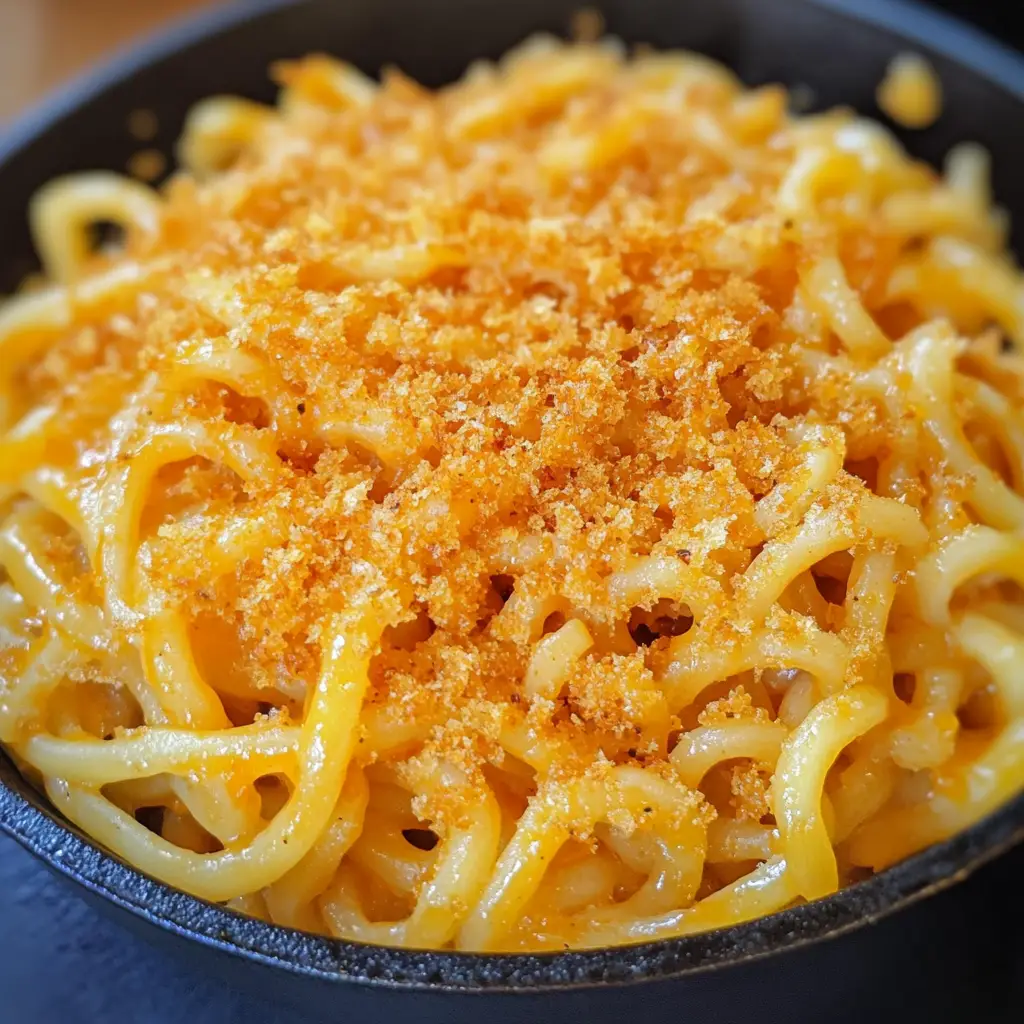
Cheese Variations You Can Try:
- Shredded cheddar: Classic and sharp
- Parmesan: Nutty, salty, and savory
- Cream cheese: For extra creaminess and tang
- Colby Jack or mozzarella: For a milder flavor and smooth texture
How to Do It:
After tossing your noodles in butter and broth, stir in ½ to 1 cup of your favorite shredded cheese. Let it melt over low heat, stirring constantly until the sauce thickens.
Bonus Tip: Top with breadcrumbs and bake at 350°F for 10–15 minutes for a golden crust.
Spicy and Asian-Inspired Versions
You can also go the opposite direction by adding bold, international flavors to your cafeteria noodles. These tweaks give you a whole new dish with the same comforting base.
Spicy Add-Ins:
- Red pepper flakes or cayenne for heat
- A spoonful of chili garlic sauce or sriracha
- A dash of hot sauce blended into the butter broth
Asian-Inspired Ideas:
- Use sesame oil instead of (or along with) butter
- Add soy sauce, hoisin, or fish sauce for umami
- Mix in chopped scallions, bean sprouts, or bok choy
- Top with a soft-boiled egg or crispy fried tofu
These versions bring exciting twists to the traditional cafeteria-style noodles while still keeping prep time short and ingredients accessible.
Craving more creative comfort food dishes?
Check out our easy tuna casserole guide—it’s another nostalgic favorite
Whether you’re feeling cheesy, spicy, or globally inspired, there’s no wrong way to reinvent cafeteria noodles. It’s all about turning a humble dish into something you and your family will crave again and again.
Storage and Reheating Tips
Let’s face it—cafeteria noodles taste just as good the next day, maybe even better. Their buttery texture and rich flavor hold up surprisingly well in the fridge, making them ideal for batch cooking or leftovers. But like all pasta-based dishes, how you store and reheat them makes all the difference between soggy sadness and next-day success.
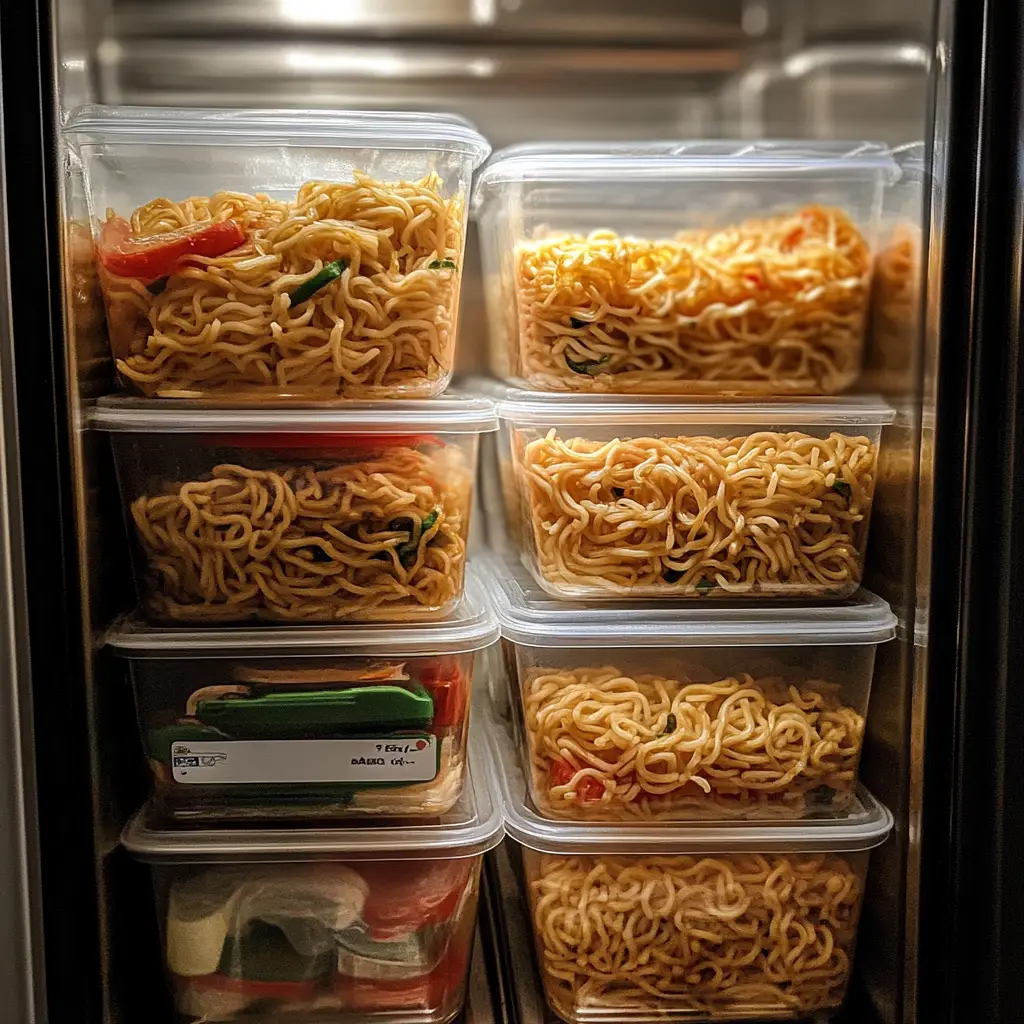
How to Store Noodles Without Losing Texture
Here’s how to properly store cafeteria-style noodles:
| Storage Method | Best Practices | Shelf Life |
|---|---|---|
| Airtight container (fridge) | Let noodles cool completely before sealing | Up to 4 days |
| Freezer-safe bag or container | Portion into servings, remove excess air | Up to 3 months |
| Add extra broth or butter | Prevents drying out and sticking | Essential for best results |
Pro Tip: If you know you’ll be reheating later, slightly undercook your noodles initially to avoid mushiness when reheated.
Always label your containers with the date and type of dish. That way, you’ll never lose track of what’s in the back of your fridge or freezer.
Reheating Techniques for the Best Leftovers
Reheating cafeteria noodles is easy, but a few tricks can bring them back to life like they were freshly made.
Stovetop (Best Method):
- Place noodles in a non-stick pan or pot.
- Add a splash of broth, water, or butter.
- Heat on medium-low, stirring gently until warm.
Microwave:
- Place noodles in a microwave-safe bowl.
- Add 1–2 tablespoons of water or broth.
- Cover with a damp paper towel or lid.
- Heat in 30-second intervals, stirring in between.
Oven (for baked variations):
- Preheat oven to 350°F.
- Place noodles in a baking dish.
- Cover with foil to retain moisture.
- Bake for 10–15 minutes or until heated through.
Avoid reheating dry or plain noodles without moisture—they can become rubbery or clumpy.
Want a great recipe that also tastes fantastic as leftovers?
Try our creamy Tuscan salmon—it reheats like a dream
Proper storage and gentle reheating ensure your noodles stay just as flavorful and comforting as when you first made them.
Nutrition Facts and Healthier Alternatives
While the traditional cafeteria noodles recipe is all about rich comfort, that doesn’t mean you can’t enjoy it with a healthier twist. Whether you’re counting calories, watching sodium, or avoiding gluten, there are several simple ways to modify the dish without sacrificing flavor.
Calorie Breakdown and Nutritional Content
Let’s look at the typical nutrition for one serving (about 1 cup) of standard cafeteria noodles made with butter and chicken broth:
| Nutrient | Approx. Amount |
|---|---|
| Calories | 320–370 kcal |
| Total Fat | 15–20g |
| Carbohydrates | 35–40g |
| Protein | 6–10g |
| Sodium | 600–800mg |
| Fiber | 1–2g |
These values will vary depending on the amount of butter used and whether your broth is homemade or store-bought. Using reduced-sodium broth or homemade stock can significantly lower the salt content.
The richness of the dish comes from butter and egg noodles—two delicious ingredients that also pack in calories. But with a few smart swaps, you can make a lighter version that’s still cozy and satisfying.
How to Make It Healthier with Whole Wheat or Gluten-Free Options
Here are a few easy tweaks to make your cafeteria noodles a bit more nutritious:
1. Swap in Whole Wheat Noodles
They offer more fiber and a nuttier flavor, which balances the buttery broth well. Look for wide whole wheat egg noodles or flat fettuccine-style options.
2. Try Gluten-Free Pasta
Brown rice noodles, chickpea-based pasta, or gluten-free egg noodles all work great. Just adjust boiling time to avoid mushiness.
3. Use Less Butter
Cut butter in half and compensate with a splash of olive oil or broth. The dish will still feel rich, but with less saturated fat.
4. Add More Vegetables
Toss in steamed carrots, spinach, broccoli, or frozen peas. They add nutrients, fiber, and color.
5. Opt for Homemade Broth
Control the salt and boost the nutrition with collagen and minerals by simmering your own chicken broth from bones and herbs.
Looking for another dish that’s easy, comforting, and calorie-conscious?
Don’t miss our guide to slow cooker butter noodles—it’s indulgent yet adaptable
You don’t have to give up the comforting goodness of cafeteria noodles—just tweak it to match your lifestyle goals.
Frequently Asked Questions (FAQs)
Cafeteria noodles are a simple, buttery noodle dish traditionally served in school cafeterias, churches, and institutional settings. They typically use wide egg noodles simmered in a buttery chicken broth, creating a soft, savory, and comforting meal. Their popularity comes from their ease of preparation and nostalgic flavor, making them a classic comfort food.
Cafeteria noodles pair well with a variety of proteins and side dishes. Think roasted turkey, shredded chicken, or baked ham. They also go great with simple sides like green beans, mashed potatoes, or rolls. If you’re looking for something lighter, pair them with a crisp green salad or roasted vegetables.
Hakka noodles are a popular Indo-Chinese stir-fry noodle dish. Unlike cafeteria noodles, Hakka noodles are tossed with sautéed vegetables, garlic, soy sauce, and spices in a wok. They’re bold, savory, and typically have a spicy kick. They offer a completely different flavor profile—more street food than comfort food.
To make noodles from scratch, combine 2 cups of all-purpose flour with 3 eggs and a pinch of salt. Mix, knead the dough until smooth, let it rest, roll it thin, and cut into strips. Boil in salted water or broth for 3–5 minutes until tender. Homemade noodles are rich, chewy, and perfect for any comforting noodle recipe.
Conclusion
Whether you grew up eating buttery noodles in a school cafeteria or you’re just now discovering their nostalgic charm, this cafeteria noodles recipe delivers a heartwarming, home-cooked experience. It’s simple, delicious, and endlessly adaptable—ideal for busy weeknights, holiday side dishes, or soothing meals when you just need something cozy.
With easy-to-find ingredients, minimal prep, and the ability to scale for crowds or families, it’s no wonder this dish has stood the test of time. Add your own twist with cheeses, spices, or vegetables—or stick to the buttery classic. Either way, you’re in for a comforting bowl of goodness.
Looking for more hearty classics and modern comfort food ideas?
Check out our homepage for endless kitchen inspiration
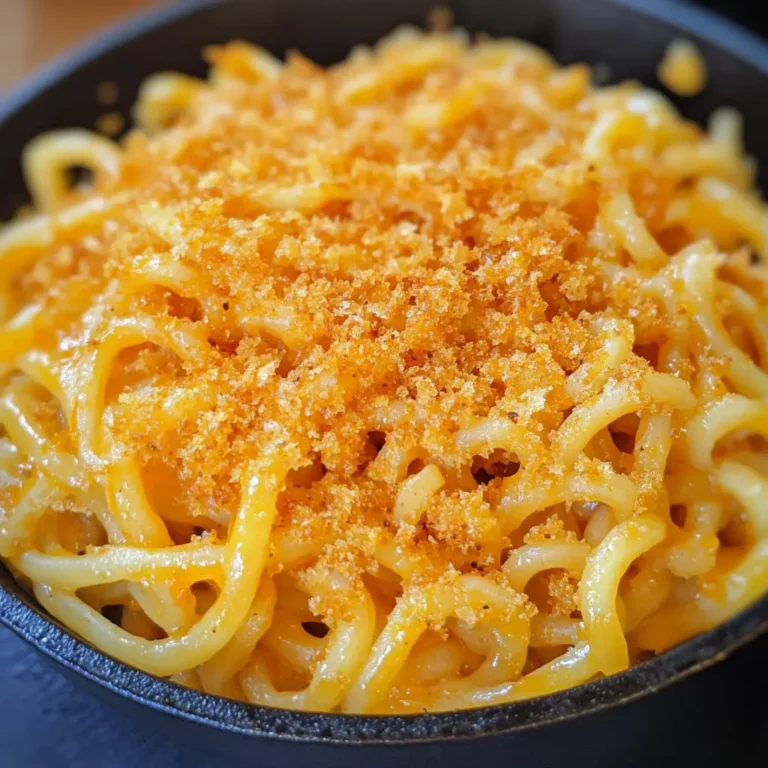
Cafeteria Noodles Recipe: The Best Comfort Food You Can Make at Home
Simple, creamy, and comforting, these buttery cafeteria noodles are a nostalgic dish perfect for family dinners or solo cravings. Quick to prepare, full of flavor, and endlessly adaptable.
- Total Time: 20 minutes
- Yield: 4 servings 1x
Ingredients
- 12 oz wide egg noodles
- ½ cup unsalted butter
- 3–4 cups chicken broth (or water with bouillon)
- Salt, to taste
- Black pepper, to taste
- (Optional) Garlic powder or onion powder
- (Optional) Shredded chicken or turkey
- (Optional) Frozen peas or corn
- (Optional) Parmesan cheese
- (Optional) Heavy cream
- (Optional) Chopped parsley or thyme
Instructions
- Bring a large pot of water or chicken broth to a rolling boil.
- Add 1–2 teaspoons of salt, then stir in the egg noodles.
- Boil uncovered for 6–7 minutes or until soft but not mushy.
- If using bouillon cubes, dissolve them in water before adding noodles.
- Drain if needed, or leave some broth for extra sauciness.
- In the same pot or a large pan, melt the butter over medium heat.
- Stir in chicken broth and let it simmer for 3–5 minutes.
- Add optional seasonings like garlic or onion powder.
- Return cooked noodles to the pot and stir to coat in the buttery broth.
- Season with salt and pepper to taste. Add any optional mix-ins or toppings at this stage.
- Simmer gently to let the broth slightly reduce and butter cling to the noodles.
Notes
Use real butter for the best flavor. For a richer dish, stir in a splash of cream. To make it a full meal, add cooked chicken or vegetables. Slightly undercook noodles if planning to store and reheat.
- Prep Time: 5 minutes
- Cook Time: 15 minutes
- Category: Comfort Food
- Method: Stovetop
- Cuisine: American
Nutrition
- Serving Size: 1 cup
- Calories: 350
- Sugar: 2g
- Sodium: 700mg
- Fat: 18g
- Saturated Fat: 10g
- Unsaturated Fat: 6g
- Trans Fat: 0g
- Carbohydrates: 36g
- Fiber: 1g
- Protein: 8g
- Cholesterol: 70mg
Keywords: cafeteria noodles, comfort food, buttered noodles, egg noodles, nostalgic recipe

